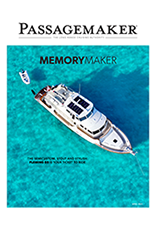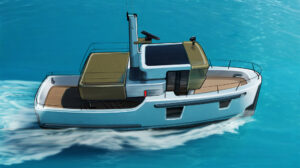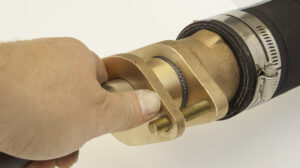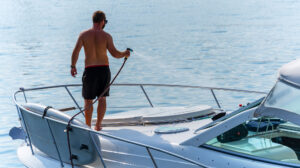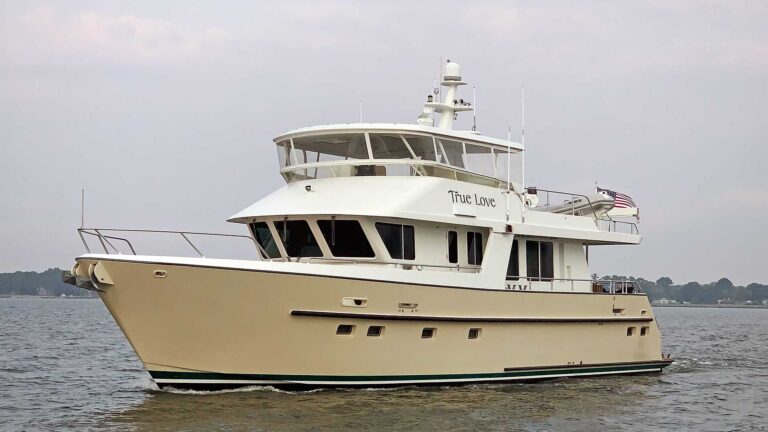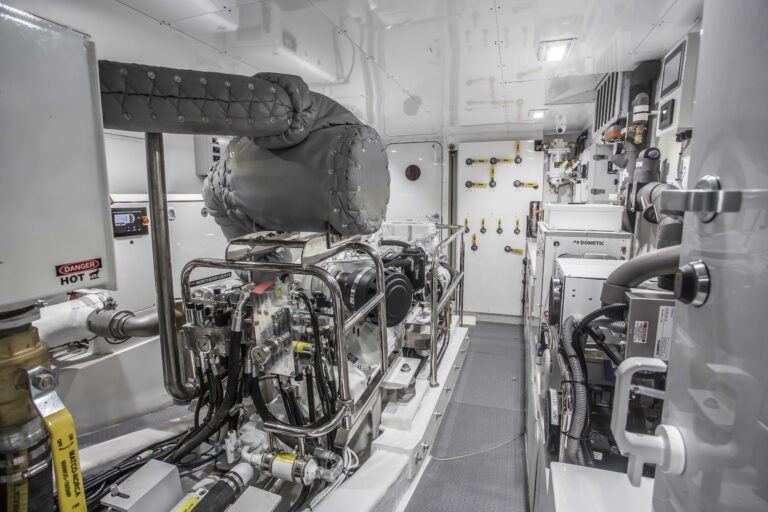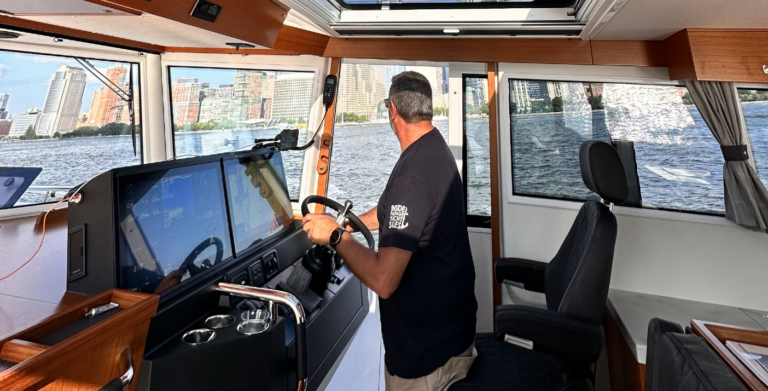
Fall was approaching, and boats in New England were starting to work their way south. Our vessel, Liberdade, was anchored in Block Island, waiting for sunrise to make an overnight run to Cape May, N.J., when the VHF radio crackled to life. The person politely asked if there were any 7- to 8-knot boats interested in the company of a buddy boat heading south.
This sounded like an innocent request—many boaters making an ocean voyage, especially for the first time, seek the company of another boat. After all, there seems to be safety in numbers. But if we explore the possible scenarios of how two boats traveling together would assist each other, that feeling of safety may turn out to be an illusion.
For as long as ships have been at sea, there has been a moral and, sometimes, legal obligation to offer assistance to a fellow ship in need. The U.S. Code of Federal Regulations, Title 46, Section 2304 states: “A master or individual in charge of a vessel shall render assistance to any individual found at sea in danger of being lost, so far as the master or individual in charge can do so without serious danger to the master’s or individual’s vessel or individuals on board.” There is a penalty for failing to comply: “A master or individual violating this section shall be fined not more than $1,000, imprisoned for not more than two years, or both.”
A long tradition has always existed of boaters assisting other boaters, not out of fear of the fines, but out of human decency, and the knowledge that the tables could one day easily be turned. Still, accepting the responsibility of assisting another vessel at sea should not be taken casually, especially when agreeing to travel with a recent acquaintance, knowing nothing of their experience or the condition of their boat.
Sharing Information
Boating is a social activity. My wife and I have met the nicest people while boating, and we frequently travel with our fellow boaters. We do it purely for the social reasons, not for a perceived sense of safety. However, the information one can glean from a fellow boater is valuable. Nothing beats local knowledge when traveling to new areas aboard your boat. If friends have been there, they can share their routes and knowledge of features unique to the area. Following another boat that is familiar with an inlet or channel can also provide a safe way along an unfamiliar route.
Companionship
Comfort in the company of others is an important and understandable aspect of buddy boating. When making a long passage across open water, or an overnight run on a moonless night, there is comfort in seeing the radar echo or AIS symbol of your companion boat, on what might otherwise be the radar’s dark, blank screen. There is reassurance in being able to call your buddy boat for information or just a brief conversation on a long offshore run.
Physical Support
Physically being able to assist a fellow boater provides many people with a feeling of security in buddy boating. The idea that you would be there to help each other in the event one of you had a problem is a comforting thought, but being able to help the way many envision could also be the most problematic idea.
I can cite one instance where the presence of a buddy boat did offer significant assistance. A friend was traveling with another boat on an overnight passage when our friend’s boat was struck by lightning. They lost all of their electronics, but the boat was still running and seaworthy. They called their buddy boat over a handheld VHF radio that had not been affected, and followed that boat through the night and into port the next morning.
I’m sure there are other possibilities like this, but in my conversations with fellow cruisers, the most common form of assistance I hear boaters mention is one boat being able to tow the other in the event of a mechanical breakdown. This is not as easy as most people think, and could, in fact, be dangerous. Most recreational boats are not set up to tow another boat, and most boaters lack the specialized knowledge required to do it correctly.
First, there is the risk of two boats getting close enough to each other in open water to pass a line from boat to boat. Second, proper line selection is required to tow safely. A proper tow line in the open ocean should be eight to 10 times the length of the boat being towed; that could be 300 to 500 feet long for a medium-size pleasure boat. Most boaters don’t carry lines that long. Having the correct type of line with the proper strength is also unlikely. Three-strand nylon, the most common dock line, is also the most dangerous tow line. It allows too much stretch and can break with explosive results. Last, there is the problem of unsuitable attachment points aboard each boat. Cleats may not be reinforced sufficiently, nor are they located properly, to act as tow points. Towing is best left to professionals with the knowledge and hardware to do it safely.
What if your buddy boat doesn’t need to be towed? They may only needed assistance in repairing an item on the boat, or need a spare part that you may have. Or, what if they needed first aid or medical care? All of these would require transferring a person from boat to boat, which may be difficult if not impossible to do safely in an open body of water, especially with any amount of swell or even small, wind-driven waves.
The most extreme scenario would be the loss of a boat and the need to retrieve people from the water or a life raft. Think carefully about how this would be accomplished before assuming it would be easy. U.S. Coast Guard rescue vessels are specifically designed with an area to bring someone into the boat from the water. Coast Guard personnel train and exhaustively rehearse techniques to perform this task safely. Don’t assume it would be without risk to all parties involved.
Organized ocean-crossing rallies, which advertise the safety of fellow boaters, frequently identify and outfit specific boats within the rally to perform towing and rescue functions. Rally organizers also typically require rigorous vessel inspections to reduce the chances of a breakdown needing assistance.
Traveling together also presents each of you with a difficult decision of responsibility. If the buddy boat does experience trouble, are you willing to wait with them until their problem is solved? What if that puts your vessel at risk? Waiting could mean arriving at your destination in less-than-ideal conditions of tide, current or daylight. Standing by a disabled boat in certain sea conditions could be uncomfortable at best, or even dangerous, yet leaving the other boat and continuing on could be a heavy decision to make.
Are you willing to accept this responsibility? Think hard about all of these scenarios before you agree to buddy boating, especially if you are unfamiliar with the other boater or the condition of their boat. Traveling with a boat you don’t know may increase your risk.
This is in no way meant to discourage boaters from traveling in the company of fellow boaters. It is more to encourage boaters to do it with a realistic expectation of what you are reasonably and safely able to offer each other. When traveling with friends, discuss ahead of time what each would do in the event one boat has trouble along the way. Go fully prepared with spares and the knowledge to handle emergencies aboard your own boat.
Then, enjoy the best part of traveling with fellow boaters: the bond of friendships built through the shared experience.
This article was originally published in the September 2023 issue.
